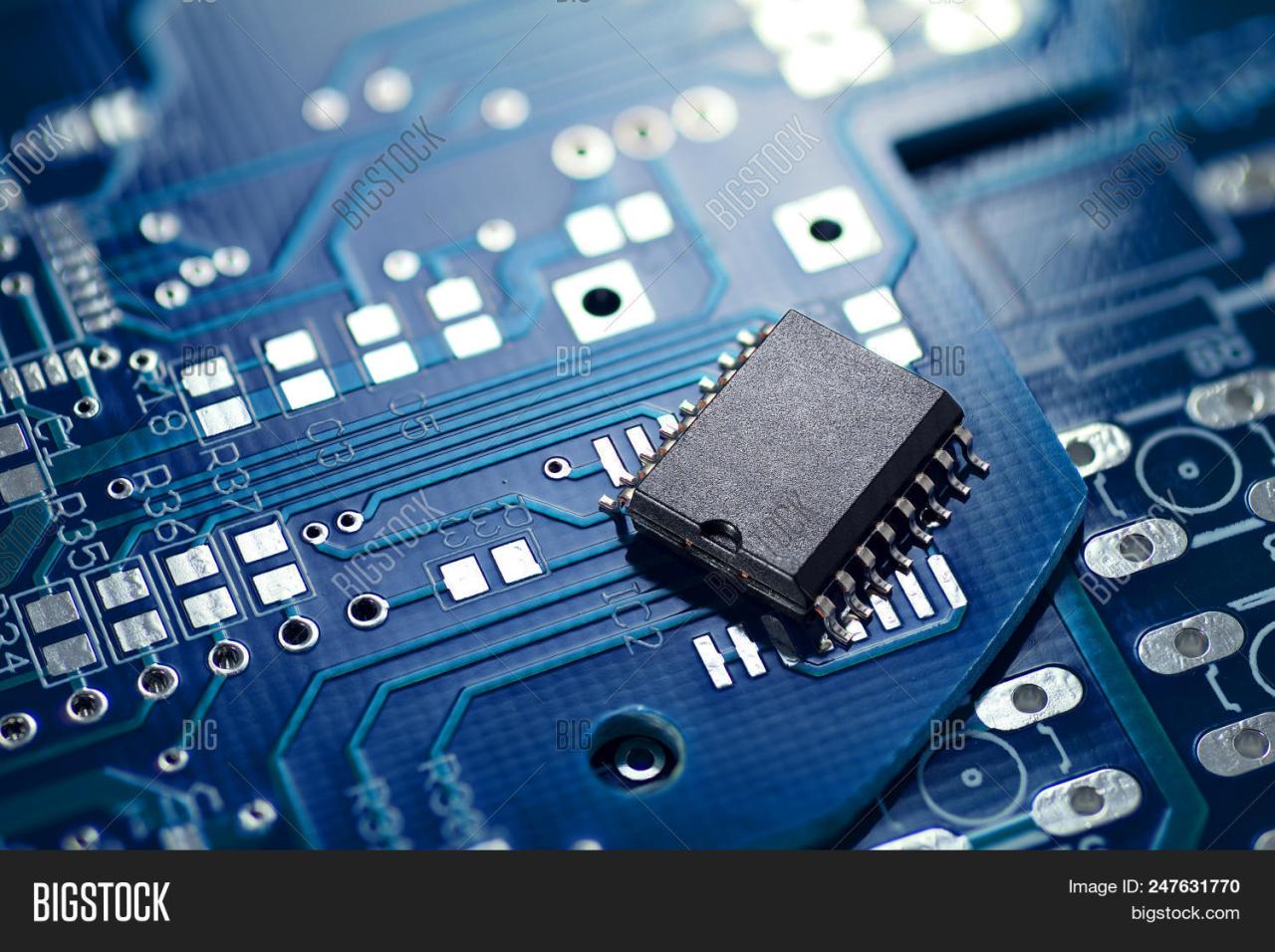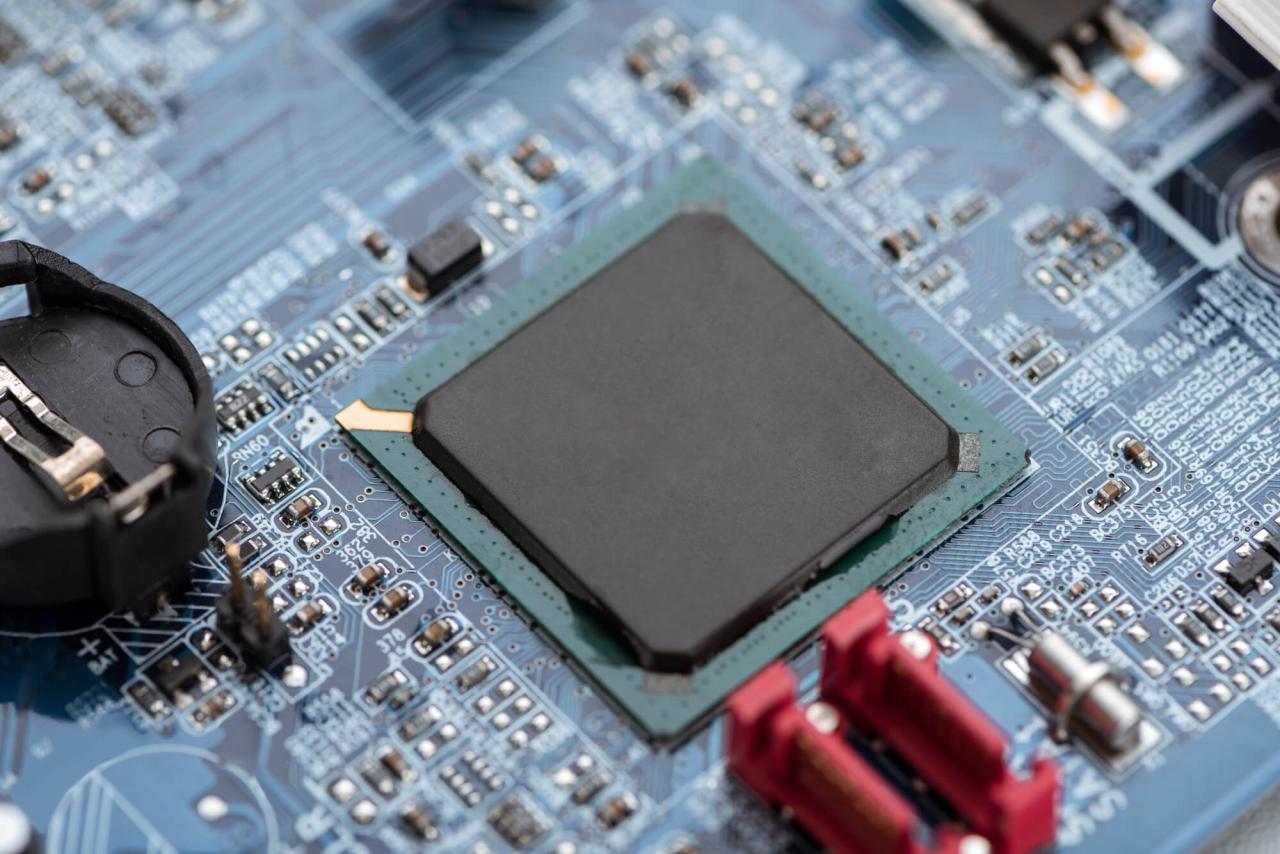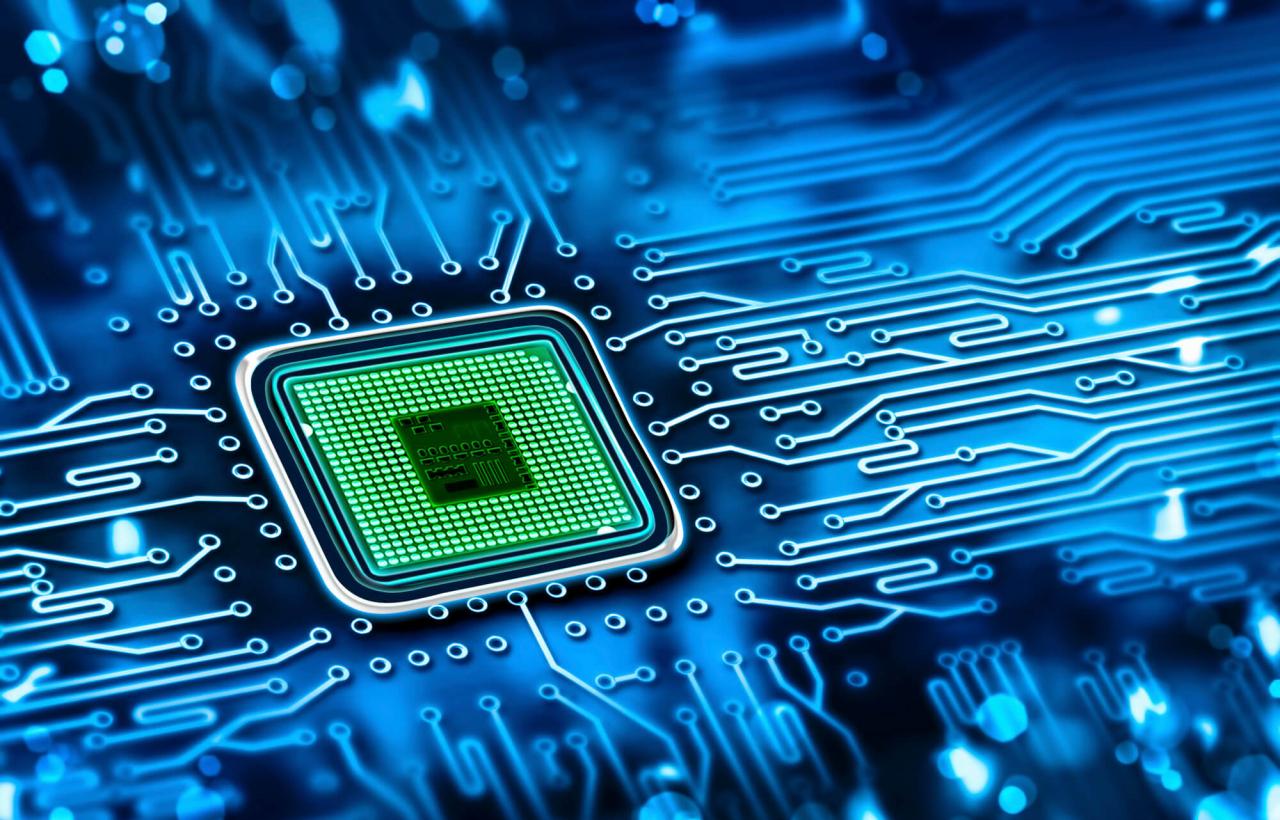Chip iPhone marks the evolution of smartphone technology, showcasing how each generation has transformed user experiences and device capabilities. From the early models to the latest releases, Apple’s innovative chip designs have continually redefined performance standards, setting benchmarks in processing speed, graphics, and energy efficiency.
As we delve deeper into the progression of chip technology in iPhones, we will explore the significant advancements introduced with each new iteration and their impact on overall functionality. This journey highlights the crucial role chips play in enhancing everything from battery management to the security features that keep user data safe.
Chip Evolution in iPhones

The evolution of chip technology in iPhones has significantly transformed the user experience, enhancing performance, efficiency, and capabilities with each new generation. From the initial A4 chip to the latest advancements, Apple has consistently pushed the boundaries of mobile processing power, integrating innovations that cater to both hardware and software improvements.
The progression of chip technology is marked by a series of groundbreaking innovations that reflect Apple’s commitment to performance and efficiency. Each new chip generation has introduced enhanced processing power, energy efficiency, and capabilities that have allowed iPhones to achieve remarkable feats in graphics and machine learning.
A Series Chips Progression
The A series chips have been central to the iPhone’s performance and functionality since their introduction. Below is an overview of notable advancements in the A series chips:
- A4 (2010): The first chip designed specifically for the iPhone, introduced with the iPhone 4. It integrated CPU and GPU functionality, laying the groundwork for future designs.
- A5 (2011): Featured dual-core processing, significantly improving speed and graphics performance. It was pivotal for games and intensive applications.
- A6 (2012): Introduced a custom CPU architecture that doubled performance at half the power consumption compared to its predecessor, enhancing battery life.
- A7 (2013): The first 64-bit chip in a smartphone, allowing for greater performance and memory addressing. This set a new benchmark in mobile processing.
- A8 (2014): Included improved graphics capabilities and was designed for better thermal efficiency, which further optimized performance during demanding tasks.
- A9 (2015): Introduced the M9 motion coprocessor, enhancing health and fitness tracking functionalities while optimizing power consumption.
- A10 Fusion (2016): A quad-core design that allowed for a balance between performance and efficiency, with capabilities for demanding tasks and energy-saving for light workloads.
- A11 Bionic (2017): Integrated neural processing for machine learning tasks, significantly improving photo processing and augmented reality experiences.
- A12 Bionic (2018): Enhanced graphical performance and energy efficiency, paving the way for advanced gaming and augmented reality applications.
- A13 Bionic (2019): Focused on machine learning capabilities, it introduced an advanced GPU that increased performance while maintaining battery efficiency.
- A14 Bionic (2020): First chip manufactured with a 5nm process, resulting in even greater performance and energy efficiency. It further improved computational photography and gaming.
- A15 Bionic (2021): Enhanced performance for both CPU and GPU, supporting advanced features like ProRAW and ProRes video recording.
- A16 Bionic (2022): Introduced with the iPhone 14 Pro, it focused on multitasking and energy efficiency, delivering a seamless user experience with demanding applications.
The continuous development of the A series chips has not only optimized performance but also revolutionized the capabilities of mobile devices. Each generation has brought forth innovations that enhance the user experience, from gaming to photography, ensuring that iPhones remain at the forefront of technology.
“Each new A series chip reflects Apple’s commitment to redefining mobile computing.”
Comparison of Different iPhone Chips: Chip Iphone

The iPhone series has consistently set benchmarks for mobile performance, largely due to its advanced chip technology. Apple’s relentless pursuit of efficiency and power has led to the development of a variety of chips, each iteration improving upon the last. This comparison will shed light on the performance metrics, architectural differences, and enhancements in graphics and processing capabilities across some of the most significant chips, such as the A14 and A15.
Performance Metrics of A14 and A15 Chips
Performance metrics provide a quantitative basis for comparing the capabilities of iPhone chips. The A14 chip, introduced in the iPhone 12 series, marked a significant leap in performance with a 5nm process technology that enabled a higher transistor count and improved efficiency. The A15, used in the iPhone 13 series, further refined this approach.
- CPU Performance: The A15 chip features a 6-core CPU with two performance cores and four efficiency cores, offering up to 50% faster CPU performance compared to rivals at the time. In contrast, the A14 also had a 6-core CPU, but the A15’s architecture allows for better multitasking and overall processing speed.
- Neural Engine: Both chips include a dedicated Neural Engine; however, the A15’s Neural Engine processes up to 15.8 trillion operations per second, a notable increase from the A14’s 11 trillion operations, enhancing machine learning capabilities for applications like photography and gaming.
- Benchmarks: In benchmark tests such as Geekbench, the A15 consistently outperformed the A14 by approximately 10-15%, showcasing its superior architecture and efficiency.
Architectural Differences and User Implications, Chip iphone
The architectural design of these chips impacts user experience significantly. The A14 chip’s architecture was a remarkable feat, introducing 5nm technology for the first time in a smartphone, which allowed for more transistors in a compact space. The A15 builds on this foundation, introducing an enhanced 4-core GPU, further optimizing the graphics rendering process.
- Transistor Count: The A14 chip features around 11.8 billion transistors, while the A15 boasts approximately 15 billion, leading to improved performance and efficiency.
- Thermal Efficiency: Both chips are designed to manage heat effectively, but the A15 utilizes more advanced thermal management techniques, allowing devices to maintain high performance without significant overheating.
- User Experience: The enhancements in the A15 chip translate to faster app launches, smoother multitasking, and more immersive gaming experiences, making it particularly appealing to power users and gamers.
Graphics and Processing Enhancements
Graphics capabilities are a crucial aspect of modern smartphones, especially for gaming and high-definition media consumption. The A15 introduces several improvements in this area compared to the A14.
- GPU Performance: The A15’s 4-core GPU offers up to 30% faster graphics performance than the A14, making it ideal for graphics-intensive applications and games.
- Rendering Techniques: The A15 chip supports advanced rendering technologies such as Metal and Ray Tracing, allowing for lifelike graphics and enhanced visual fidelity in applications.
- Real-World Impact: Users can experience smoother gameplay in demanding titles like “Genshin Impact” or “Call of Duty: Mobile,” where frame rates are critical for an enjoyable experience.
“The A15 chip not only enhances processing speed but also redefines mobile graphics performance, setting a new standard for handheld devices.”
Role of Chips in iPhone Functionality

The chip in an iPhone is a linchpin for its overall performance and user experience, influencing everything from battery life to security and multitasking capabilities. As the heart of Apple’s mobile technology, the chip plays a pivotal role in how users interact with their devices daily. Understanding the multifaceted contributions of these chips can provide valuable insights into the efficiency and capabilities of iPhones.
Battery Efficiency and Management
The chip’s architecture significantly impacts battery efficiency and management in iPhones. Modern chips are designed with energy-saving features that optimize power consumption during various tasks. By utilizing advanced manufacturing processes, such as the 5nm technology in the A14 Bionic chip, Apple achieves remarkable performance without draining battery life.
Efficient power management is realized through several mechanisms:
- Dynamic Voltage and Frequency Scaling: This allows the chip to adjust its performance levels based on current tasks, ensuring that power is conserved during low-demand operations.
- Optimized Processing: The A-series chips incorporate specialized cores for handling specific tasks, allowing for less power-intensive operations when high performance is unnecessary.
- AI and Machine Learning: Apple’s chips utilize machine learning to predict user behavior, enabling proactive adjustments to battery performance—extending battery life during critical moments.
Security Features
Chips in iPhones also play a crucial role in enhancing security, making them some of the most secure smartphones available. Apple’s custom chips integrate dedicated security hardware, ensuring that sensitive data is protected at both the hardware and software levels.
Key security features include:
- Secure Enclave: This isolated environment within the chip protects sensitive information, such as Face ID, Touch ID, and encrypted keys, from unauthorized access.
- Hardware-based Encryption: Data stored on the device is encrypted using advanced algorithms that are executed directly by the chip, ensuring that even if the device is compromised, the data remains inaccessible.
- Continuous Updates: The chip’s design allows for seamless integration of security updates, which are vital in protecting against emerging threats and vulnerabilities.
App Performance and Multitasking Capabilities
The performance of applications and the ability to multitask effectively are heavily reliant on the capabilities of the chip. Apple’s chips are engineered to handle intensive workloads, allowing seamless switching between applications without lag.
The influence of the chip on app performance includes:
- Advanced Graphics Processing: With a dedicated GPU, the chip enhances gaming experiences and graphics-intensive applications, providing high frame rates and smooth interactions.
- Memory Management: The architecture of Apple’s chips facilitates efficient memory usage, allowing multiple applications to run simultaneously without significant slowdowns.
- Integrated Neural Engine: This component accelerates machine learning tasks, improving app functionalities such as image processing, real-time language translation, and more, thereby enhancing user experience.
“The integration of advanced chips in iPhones sets a benchmark for performance, efficiency, and security, redefining what users can expect from their devices.”
Future Trends in iPhone Chip Development
The landscape of technology is rapidly evolving, and the iPhone’s chip development is no exception. As Apple continues to push the boundaries of innovation, the next generation of iPhone chips is expected to bring forth significant advancements. With an emphasis on performance, efficiency, and integration of cutting-edge technologies, these upcoming chips promise to enhance user experiences dramatically.
The anticipated advancements in iPhone chips include enhanced processing power, increased energy efficiency, and the integration of artificial intelligence capabilities. By leveraging state-of-the-art semiconductor technology, future iPhone chips will enable seamless multitasking and improve overall device responsiveness. Furthermore, innovations such as 3D chip stacking and advanced manufacturing techniques could lead to reduced sizes and improved thermal management, allowing devices to run cooler and more efficiently.
Integration of 5G Technology
The incorporation of 5G technology into upcoming iPhone chip designs is crucial for enhancing mobile connectivity and user experience. As 5G networks become more widespread, the demand for chips that can effectively handle the increased data rates and network capabilities will grow substantially.
The significance of 5G technology in future iPhone chips can be summarized as follows:
- Increased Data Speeds: Future chips are expected to support multi-gigabit speeds, significantly reducing download and upload times for applications, streaming, and gaming.
- Lower Latency: The reduced latency capabilities of 5G will enhance real-time applications, such as video calls and online gaming, providing a smoother experience.
- Enhanced Connectivity: Advanced chip designs will improve the ability of iPhones to connect multiple devices simultaneously, maximizing the potential of the Internet of Things (IoT).
- Improved Battery Efficiency: Future chips may also include optimizations for 5G that minimize energy consumption, thereby extending battery life even while using high-speed data.
As 5G technology continues to advance, the user experience on iPhones will evolve accordingly. Applications that require high bandwidth, such as AR/VR experiences, real-time collaboration tools, and high-definition streaming, will become more accessible and enjoyable. The potential for innovation in mobile gaming and immersive applications will be boundless, paving the way for an enriched digital lifestyle.
Overall, the future trends in iPhone chip development indicate a promising evolution in performance, connectivity, and user engagement, positioning Apple to maintain its leadership in the competitive smartphone market.
Q&A
What is the significance of the A-series chips?
The A-series chips are crucial as they power all iPhone functionalities, balancing performance and energy efficiency.
How do iPhone chips affect app performance?
iPhone chips enhance app performance by providing faster processing speeds and improved graphics capabilities, enabling smoother multitasking.
What advancements can we expect in future iPhone chips?
Future iPhone chips are expected to include enhanced AI capabilities, improved energy efficiency, and better integration with 5G technology.
Do iPhone chips impact battery life?
Yes, advancements in chip technology significantly improve battery management and efficiency, prolonging battery life during usage.
How does the iPhone chip contribute to security?
The iPhone chip integrates secure enclaves and encryption technologies, bolstering the device’s security features against potential threats.
The Samsung Galaxy S10 Plus stands out with its impressive camera capabilities and sleek design, making it a favorite among tech enthusiasts. With its expansive display and robust performance, this smartphone caters to users looking for a top-tier experience. Whether you’re into photography or gaming, the S10 Plus has features that enhance every aspect of smartphone usage.
When considering classic smartphones, the Galaxy Note 2 holds a special place in many hearts. Known for introducing the phablet concept, it combined a large screen with the functionality of a stylus, allowing for an innovative user experience. Its legacy lives on, reminding us of how far mobile technology has come.